Honduras
Short on time? Here are our Honduras top recommendations:
Places: Roatán or Utila for a tropical island paradise with unmissable diving experiences,
Copan Ruinas for magnificent Mayan ruins,
Tegulcigalpa for a city escape.
Activities: book your Honduras Tours with Get Your Guide.
Accommodation: we use Booking.com to find the best hotels.
Flights: find cheapest flights with cashback on WayAway.
Airport Lounge Access: start your holiday the right way with Priority Pass.
Travel Medical Insurance: SafetyWing Nomad Insurance is the ideal choice for long-term travellers and digital nomads.
Travel Banking: Wise makes global travel banking seamless and affordable.
Why you should go to Honduras
Abundant with natural resources, Honduras is the perfect ecotourism destination. The Bay Islands of Roatán and Utila are diving meccas, surrounded by the second largest barrier reef in the world. The country is also home to the Mayan ruins of Copan Ruinas as well as the cosmopolitan city of Tegulcigalpa. Honduras is a great low cost destination and an off the beaten path Central American country ripe to explore! This Honduras travel guide will tell you everything you need to know to plan an amazing Honduras trip.
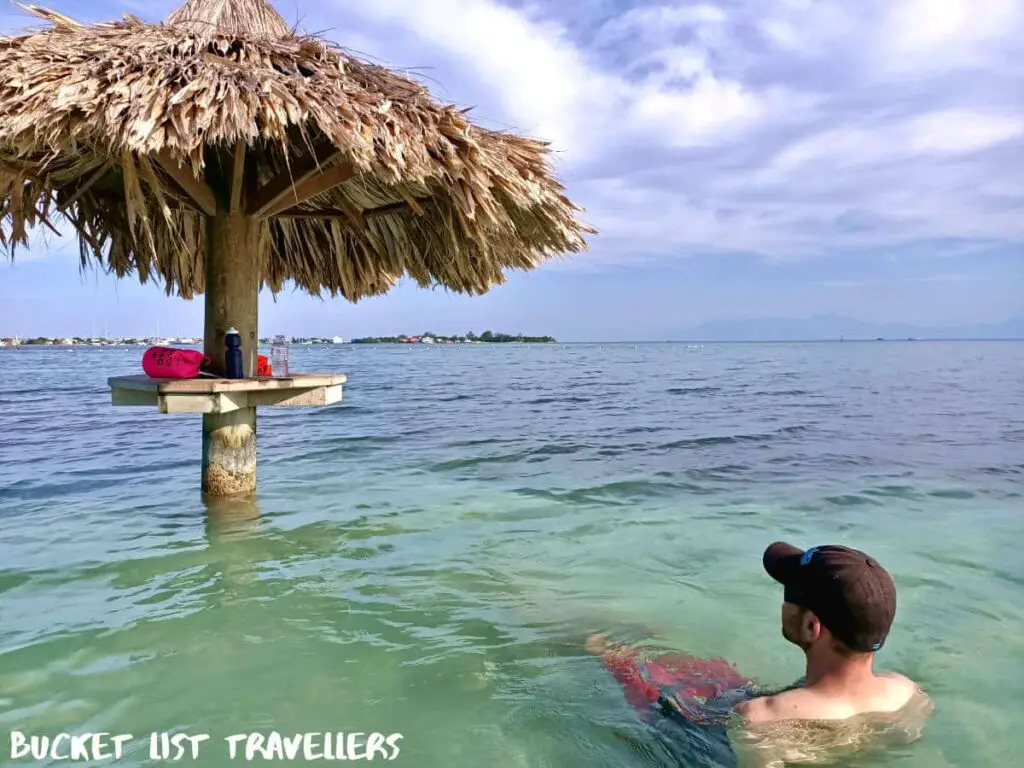
Honduras travel guide: Know before you go
Honduras travel guide: Basic info about Honduras
- Language – Spanish; Many tour operators and hotel staff speak English in popular tourist areas, but if you prefer travelling and shopping local you will need a basic understanding of Spanish. English is widely spoken in the Bay Islands.
- Currency – Honduran lempira (HNL). Many hotels and restaurants also accept United States dollars (USD), although you will generally get better rates if you pay in lempira.
- Population – 9.91 million (2020)
- Area – 112,492 km2 (43,433 sq mil)
- Capital – Tegulcigalpa
- Emergency number – 911
- Police number – 911
Utilities in Honduras
- Electricity – Honduras uses Types A and B power plugs, which is the same plug type as the United states. It operates on an 110v supply voltage at 60Hz. Power outages in Honduras are not uncommon but generally don’t last for too long.
- Water – the tap water in Honduras is not safe to drink. Your accommodation will generally provide bottles of purified water for guests to use.
- Toilets – sit-down flushing toilets are the most common type of toilet in Honduras. Don’t flush your toilet paper – use the bins provided. Public toilets are not common in Honduras, but you can usually find toilets in cafes and restaurants.
- Telephone country code: +504
Where is Honduras?
Honduras is a country in Central America. It is shares land borders with Guatemala, El Salvador and Nicaragua. Honduras has coastlines both on the Carribean Sea as well as a short coastline on the Pacific Ocean (at the Gulf of Fonseca).
Entry requirements for Honduras
Honduras is covered by the Central America Border Control Agreement (also known as CA-4). The CA-4 Agreement covers travel to El Salvador, Guatemala, Honduras and Nicaragua.
These are the general entry requirements for the CA-4 countries (El Salvador, Guatemala, Honduras and Nicaragua):
- You need whatever visas are required for your specific country to enter the CA-4 area. Most travellers can enter the CA-4 area visa free if they are staying for less than 90 days
- Your passport must be valid for at least 6 months from your date of entry and must have at least one blank visa page
- You need proof of funds for your proposed stay
- You must purchase a tourist card on entry. This costs $12 USD (as at April 2024)
- You may also need a return ticket or proof of onward travel to another country
How to get to Honduras
Honduras travel guide: arriving overland
Land border crossings for Honduras
Honduras has land borders with Guatemala, El Salvador and Nicaragua.
3 main land border crossings between Guatemala and Honduras:
- Corinto, between Puerto Barrios, Guatemala and Omoa, Honduras
- Agua Caliente, between Esquipulas, Guatemala and Nueva Ocotepeque, Honduras
- El Florido, between Chiquimula, Guatemala and Copán Ruinas, Honduras
2 main land border crossings between El Salvador and Honduras:
- El Amatillo – between Pasaquina, El Salvador and Las Lajas Honduras
- El Poy – between San Ignacio, El Salvador and Ocotepeque, Honduras (we have done this border crossing)
3 main land border crossings between Nicaragua and Honduras:
- Las Manos (we have done this border crossing)
- El Espino
- El Guasaule
Honduras land border transport
The main transport options for travelling overland to Honduras are:
- Private vehicle
- Private transport operator
- Shuttle bus
- Local transport – by far the cheapest option is to take public transport. Keep in mind that local transport is a slower option. Furthermore, you may also need to take multiple buses to get to your required destination.
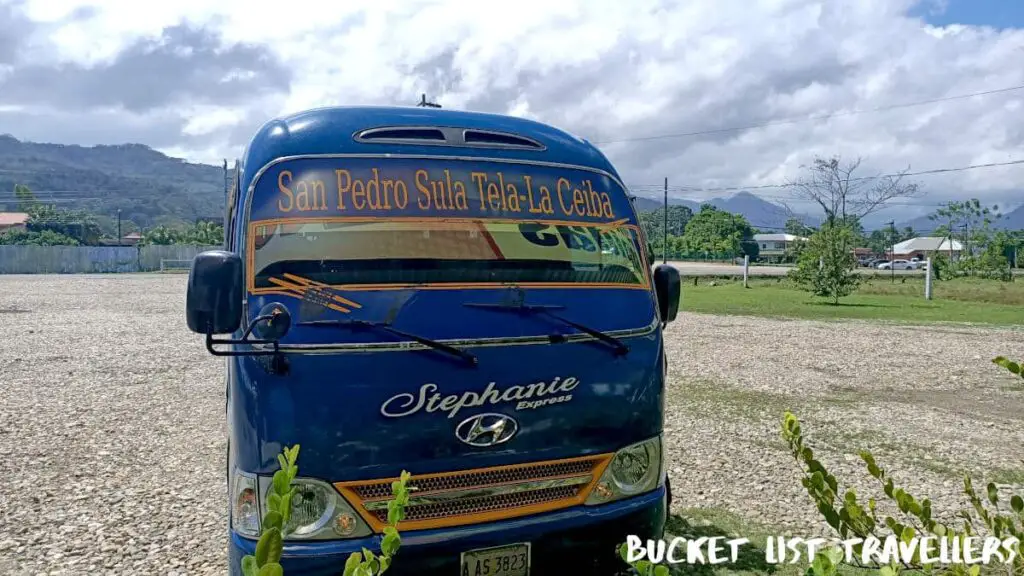
Honduras travel guide: arriving by air
There are five international airports in Honduras:
- Ramón Villeda Morales International Airport in San Pedro Sula (Airport code SAP). This airport is also known as La Mesa International Airport. It is the main airport of Honduas.
- Palmerola International Airport in Comayagua (Airport code XPL). This airport is also known as Comayagua International Airport. Completed in 2021, this airport has taken over much of the traffic from Toncontín International Airport. It is now one of the major airports in the country.
- Toncontín International Airport in Tegulcigalpa (Airport code TGU). This airport is also known as Teniente Coronel Hernán Acosta Mejía Airport. It is also a military airport. Toncontín Airport is a very difficult airport to navigate and has the unfortunate distinction of being the 2nd most extreme airport in the world. This is due to its short runway and its close proximity to mountainous terrain. Since the opening of the nearby international airport in Comayagua, Toncontín is now only accepting domestic flights.
- Juan Manuel Gálvez International Airport in Roatán (Airport code RTB). This airport was previously known as Roatán International Airport.
- Golosón International Airport in Le Ceiba (Airport code LCE). This airport is also known as as as well as Hector C. Moncada Air Base. It serves as both a military base as well as a public airport.
If departing Honduras by air, there is an international departure tax of approximately US$34, payable in cash only in US dollars or Honduran lempiras.
Honduras travel guide: arriving by sea
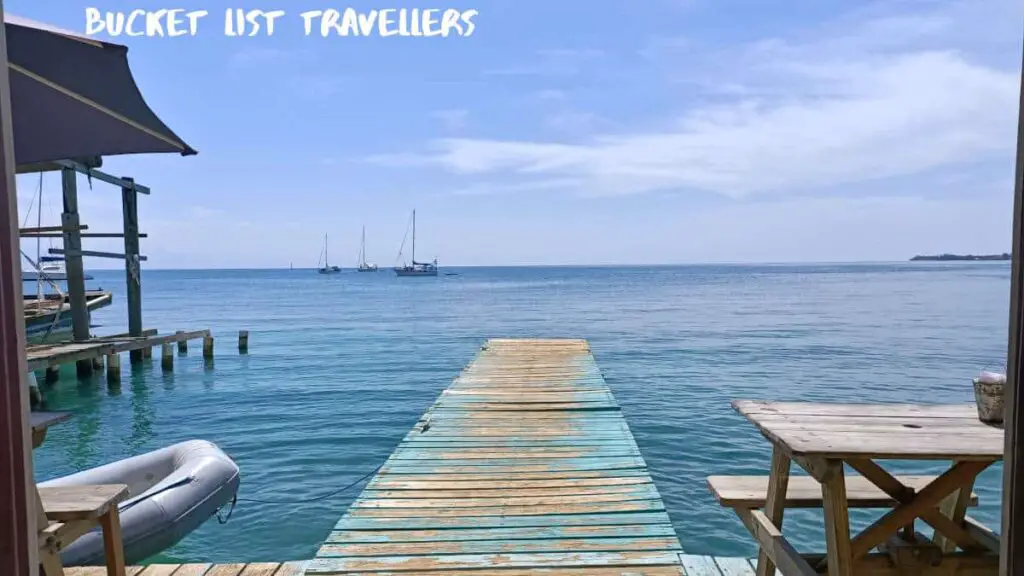
The main sea ports in Honduras are Puerto El Henecan (San Lorenzo) on the Pacific Coast as well as Puerto Castilla, Puerto de La Ceiba, Puerto Cortés, Puerto Tela and Puerto Coxen Hole (Roatán) on the Caribbean Coast.
There are ferries between Puerto Cortés in Honduras and Belize City as well as Dangriga in Belize. There is one crossing a week in each direction:
- Belize City (9am Friday) – Dangriga (11am Friday) – Puerto Cortés (2:30pm Friday)
- Puerto Cortés (11am Monday) – Dangriga (2:30pm Monday) – Belize City (4:30pm Monday)
Tickets cost US$80 (1,600 HNL) between Belize City and Puerto Cortés. Alternatively you can get a ticket between Dangriga and Puerto Cortés for US$50 (1,100 HNL). Starla Ferry used to operate this ferry service, however this company is not longer in business. Another water taxi company that operates in Belize is Hokey Pokey.
There are no regular ferries currently running from Honduras to El Salvador or Nicaragua. However the tour company Ruta del Golfo does operate a regular passenger service in the Gulf of Fonseca between El Salvador and Nicaragua. You can also book private hires through this company to take you to any destination within Central America. For more information see this website: https://rutadelgolfo.com/
There are a number of cruises that stop at the island of Roatán on the Caribbean side of Honduras.
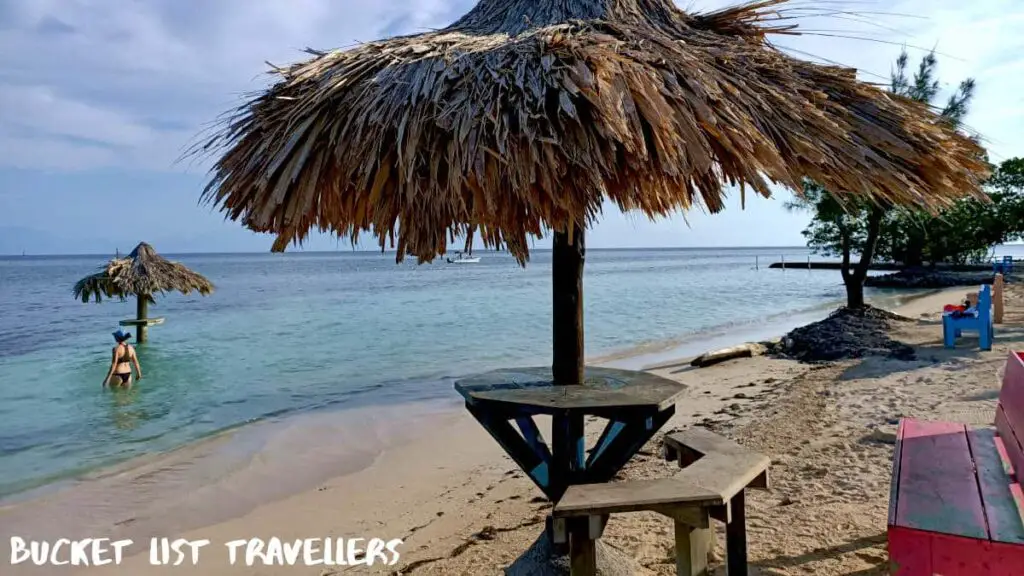
Honduras travel guide: How to get around Honduras
Local transport in Honduras
Local buses are the cheapest way to get around Honduras. However they don’t have the best reputation in terms of safety, particularly around San Pedro Sula and Tegulcigalpa. Keep in mind local buses will also be a slow and more crowded option. To get more details on buses in Honduras, we’d recommend visiting this website: https://thebusschedule.com/EN/hn/
Colectivos in Honduras
Colectivos are minivans that are a popular local public transport option in Honduras. They are slightly move expensive than local buses, but are a quicker option.

Shuttle buses in Hondura
Shuttle buses operate between major tourist destinations in Honduras. You can buy tickets at the bus stations or on the bus. Many bus companies do security screenings before you board the bus. This is due to the history of armed robberies in the past. We recommend only taking buses during daylight hours and using first-class buses rather than economy.
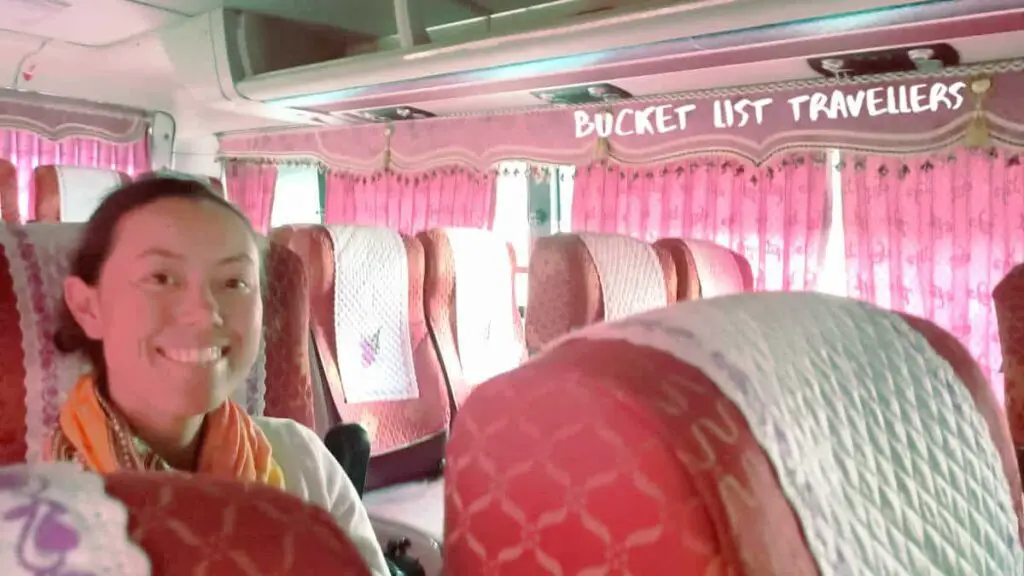
As an example of costs and travel times in Honduras, here are some of the shuttle bus trips we made in 2020:
- Ocotepeque to Santa Rosa de Copán – $4 USD (100 lempira) per person for a 2 hour bus ride
- Santa Rosa de Copán to San Pedro Sula – $5.30 USD (130 lempira) per person for a 4 hour bus ride
- San Pedro Sula to La Ceiba – $5 USD (125 lempira) per person for a 4 hour bus ride
- San Pedro Sula to La Guama – $2.65 USD (65 lempira) per person for a 1.5 hour bus ride
- La Guama to Tegulcigalpa – $4 USD (100 lempira) per person for a 2.5 hour bus ride
- Teculcigalpa to Los Manos – $4 USD (100 lempira) per person for a 2.5 hour bus ride
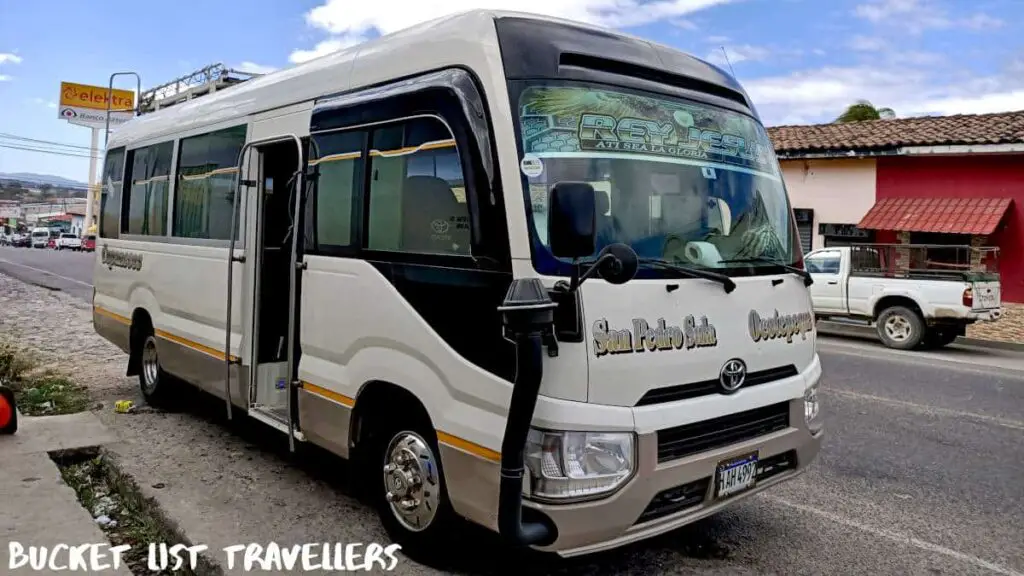
Vehicle hire in Honduras
Bicycles, Motorbikes, Golf Carts, ATVs, Cars and 4WDs can all be hired in Honduras. Expect to pay around:
- US$10-15 a day for a bicycle
- US$35 a day for a scooter
- US$45-65 a day for a motorbike
- US$50-90 a day for a golf cart
- US$60 a day for an ATV
- US$40-60 a day for a car
- US$55-80 a day for an SUV
In Honduras, they drive on the right hand side of the road. The roads in Honduras can be challenging due to the road conditions. Additionally there is the risk of carjacking. We recommend exercising caution if you decide to drive in Honduras. That being said, tourist destinations such as Roatán, the Bay Islands, Copán and other tourist destinations generally have lower crime rates than the rest of the country.
Taxis and Tuk-Tuks in Honduras
Taxis and Tuk-Tuks are common in Honduras. Honduras taxis are generally not metered and instead operate on a fixed fare. Make sure you agree on the price before taking a taxi. For taxis in Roatán, the taxi rates can be found on this website: https://roatan.online/taxi-rates. Taxis in Roatán have a reputation for overcharging tourists, so we recommend you save a copy of these rates to show the driver when you are agreeing on the fare.
Ferries in Honduras
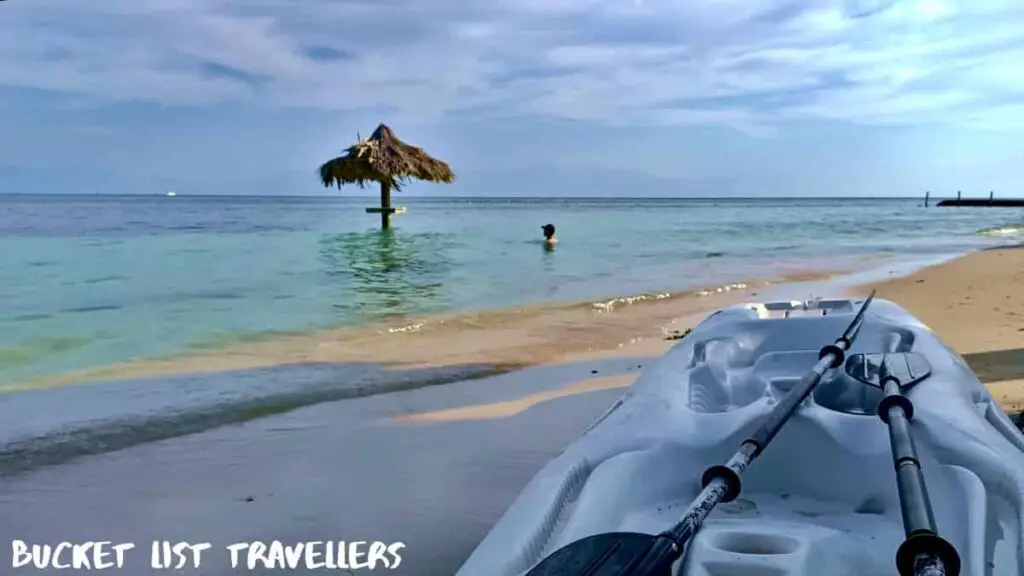
There are ferries that can take you between the islands of Utila and Roatán as well as to the mainland La Ceiba. There are 1-2 ferries a day depending on the route and crossings may be cancelled due to weather conditions. More ferries may be added in peak periods. We ended up getting stuck on Utila for 3 days due to ferry cancellations, so we recommend allowing for that possibility when planning your trip. Trip times take 45 minutes to one hour depending on the route. A one way ticket costs 1050 HNL between La Ceiba and Roatán and 750 HNL for the other routes (prices as at 2022). It is possible to get a reduced fare for some routes if you buy a return ticket online. Utlia Dream operates these ferries. The ferry crossings are as follows:
- Utila-La Ceiba: 7am as well as 3:20pm
- La Ceiba-Utila: 9am as well as 4:30pm
- Roatán-Utila: 2pm
- Utila-Roatán: 10:20am
- La Ceiba-Roatán: 9am
- Roatán-La Ceiba: 2pm
For more information see this website: https://utilaferry.com/
Lancia boats in Honduras
There are lancia boats (also known as colectivo boats) that can take you from Coyolito on the Pacific Coast to Amapala or Playa el Burro on Tiger Island. The lancias leave when full and cost 15 HNL per person. Alternatively you can pay 100 HNL for an empty boat to cross straight away. The trip time is 15-25 minutes depending on the weather and your destination.
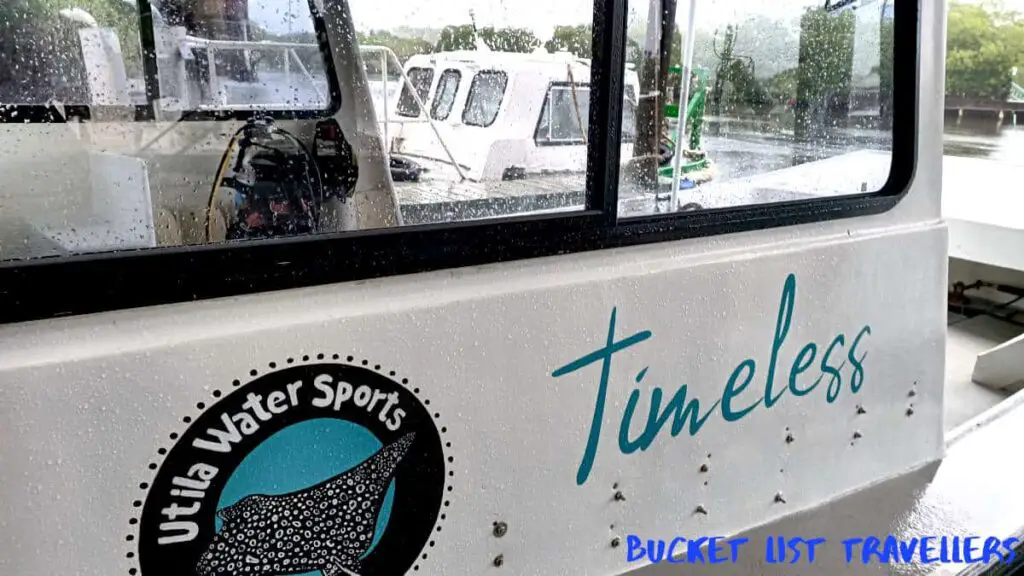
Ride-share services in Honduras
Uber, inDrive and CarpoolWorld are rideshare services that operate in Honduras.
Domestic flights around Honduras
There are 8 commercial airports operating in Honduras:
- Ramón Villeda Morales International Airport in San Pedro Sula (Airport code SAP).
- Palmerola International Airport in Comayagua (Airport code XPL).
- Toncontín International Airport in Tegulcigalpa (Airport code TGU).
- Juan Manuel Gálvez International Airport in Roatán (Airport code RTB).
- Golosón International Airport in Le Ceiba (Airport code LCE).
- Guanaja Airport in Guanaja, Bay Islands (Airport Code GJA).
- Puerto Lempira Airport in Puerto Lempira (Airport Code PEU).
- Útila Airport in Útila (Airport code UII).
The national airline of Honduras is CM Airlines. Other airlines that operate in Honduras include AeroCaribe de Honduras, Aerolíneas Sosa, Avianca Honduras, Aviatsa as well as Lanhsa Airlines.
In 2019 Honduras, Guatemala and El Salvador signed the Regulations for the Facilitation of Air and Airport Operations. This agreement will allow some of the flights operating between the three countries to be considered domestic flights.
The departure tax on all domestic flights is approximately US$1.50 and is payable only in US dollars or Honduran lempiras.
As an example of flight prices, expect to pay:
- US$113-147 for a flight between Roatán and San Pedro Sula
- US$119-155 for a flight between Roatán and Tegulcigalpa
Prices as at 2022.
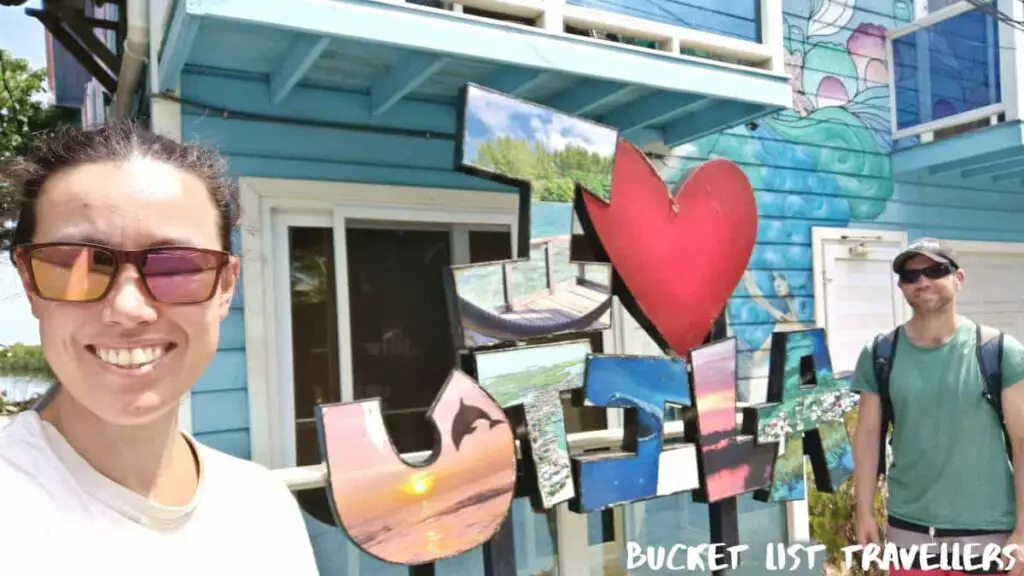
Honduras travel guide: How long to spend in Honduras
The most common visa is a CA4-90 day visa, which grants you access to Honduras, Guatemala, El Salvador and Nicaragua for a maximum of 90 days total. 2 weeks in Honduras is a good amount of time to see the major destinations.
Honduras travel guide: Best areas to visit in Honduras
Honduras is full of amazing Mayan ruins, spectacular diving, beautiful islands and stunning natural beauty. The most popular areas to visit in Honduras are:
- Mayan ruins – Copán Ruinas
- Tropical rainforest – Río Plátano Biosphere Reserve
- Lakes and natural pools – Lake Yojoa, Laguna Chiligatoro, Laguna Madre Vieja, Laguna de los Micos, Luna Jagua Hot Spring, Laguna Ticamaya
- Islands – Roatán, Utila, Guanaja, Cayos Cochinos and Tiger Island
- Volcanoes – Tiger Island, Yojoa Volcano, Isla Zacate Grande
- Beaches – West Bay Beach (Roatán), Water Cay (Utila), Chachahuate, Trujillo beaches, Mahogany Bay (Roatán), Tela, Omoa
- Colonial cities – Santa Rosa de Copan, Santa Bárbara, Trujillo, Comayagua
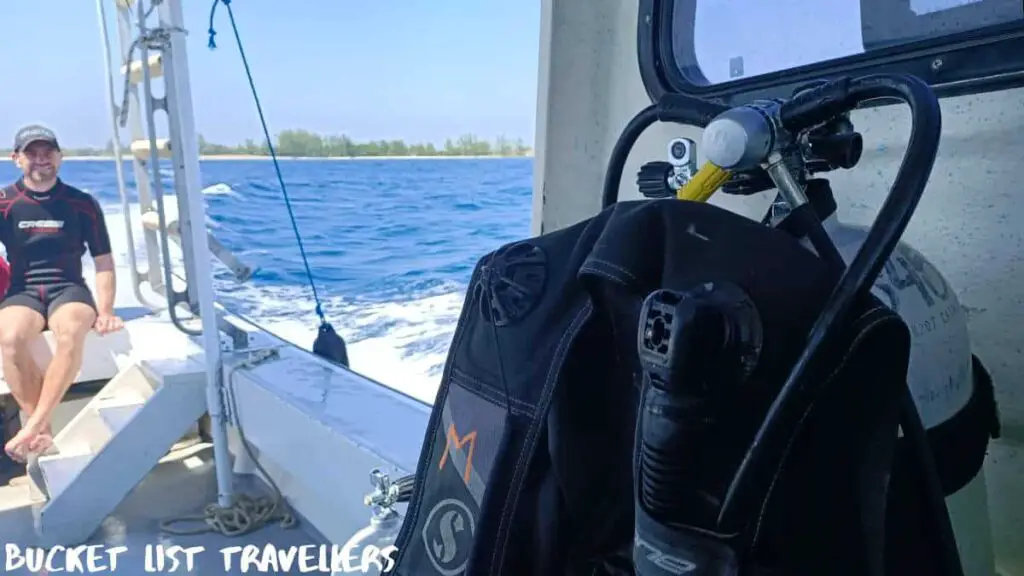
Weather in Honduras
Honduras is a tropical country with a dry and wet season. The dry season is between November and April and this is the best time to visit. The country has 3 main climate zones – the Caribbean Coast is hot and humid, the Pacific Coast is hot and dry and the mountain region of the central highlands has a milder climate. Honduras has a hurricane season which generally runs from May to November and mainly affects the Caribbean side of Honduras.
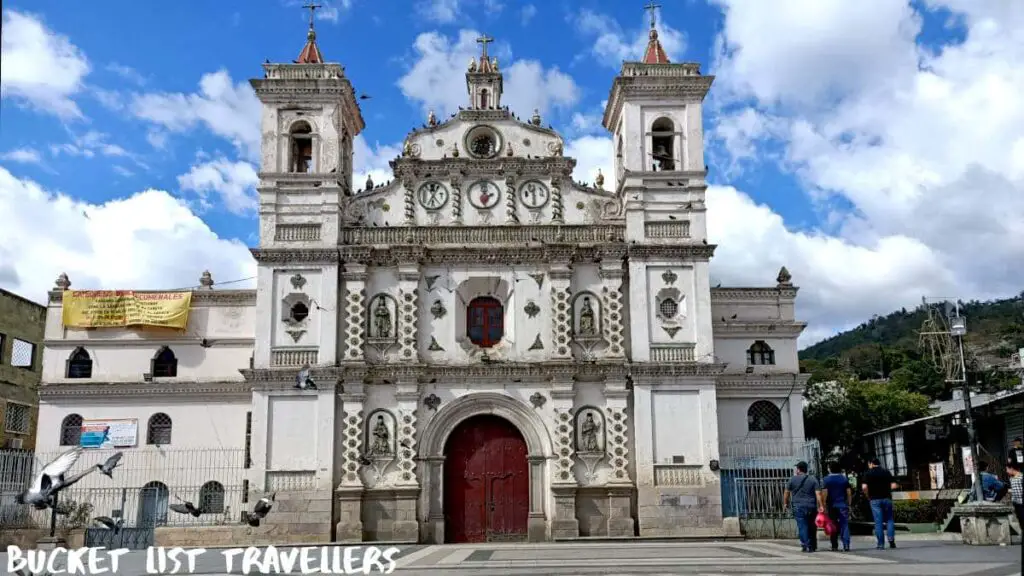
Internet and mobile phones in Honduras
The main internet and phone companies in Honduras are Tigo, Claro, Hondutel and Digicel. Hondutel is government owned. Tigo has the widest coverage but is slightly more expensive. All providers currently operate on 4G.
High speed optic fibre internet is available in some areas of Honduras. Free wifi comes standard with most accommodation and you can find free wifi in many restaurants and cafes catered to tourists.
Cell phone SIM cards can be bought in many places throughout Honduras. There are signs advertising the phone provider outside stores where SIM cards are sold.
How much to budget for Honduras?
Honduras travel guide: Daily spend for a couple travelling in Honduras
Honduras is a great value budget destination, but it also caters to those after a more luxurious experience.
As a rough guide, we recommend the following budgets for a couple:
- Low-budget daily spend – US$40 per day for a couple will get you hostel accommodation, meals at local eateries and markets, local transport and free or cheap activities such as going to the beach and visiting the local markets
- Mid-range daily spend – US$100 per day for a couple will get you mid-range accommodation, local transport or shuttles and a few tours during your trip
- Luxury spend – $500+ per day for a couple will get you a premium experience in Honduras, staying at luxury resorts, travelling by private transport, doing a range of tours and eating at high end restaurants.
If you are planning to dive or do boat tours, prices can easily be much higher.

Honduras travel guide: Accommodation in Honduras
Honduras has a good range of accommodation to suit all budgets. Airbnb operates in Honduras, but it is not as widespread as many other countries and is mainly concentrated in the popular tourist areas. Accommodation prices vary significantly by location, with the island of Roatán priced more in line with prices you’d expect in the USA. Long-term fully furnished rentals are also available in areas like Tegulcigalpa and Copán Ruinas.
For short-term accommodation, a general price per night is as follows:
- Budget accommodation – US$8-15 for dorm accommodation
- Mid-range accommodation – US$30-100 for a private room, sometimes with breakfast included
- Luxury accommodation – US$150-450 a night for a luxury hotel
- Rental property – US$60-600 a night for a fully furnished 3-5 bedroom home
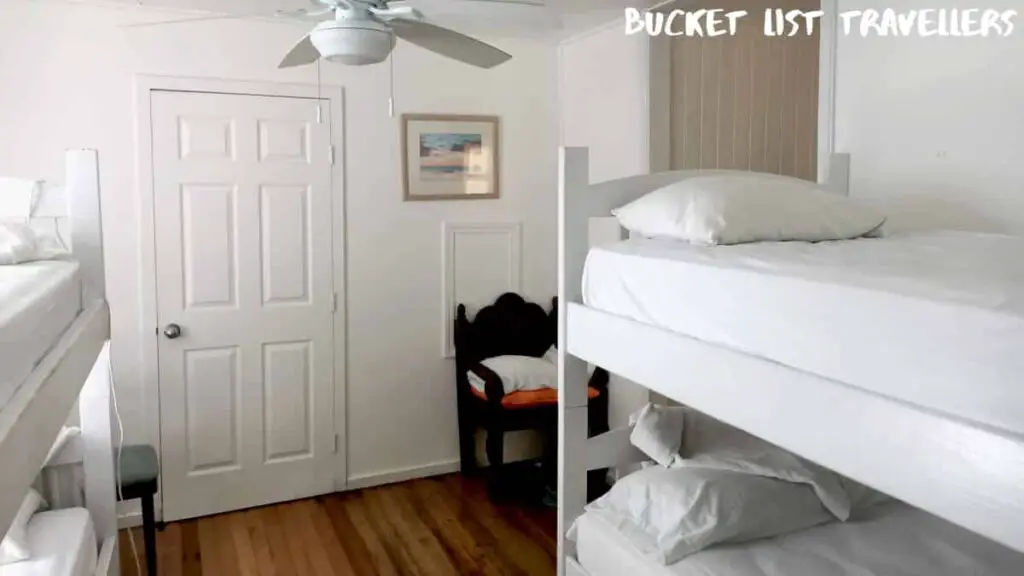
Honduras travel guide: Food in Honduras
The main tourist areas in Honduras are full of great cafes and restaurants. Honduras also has plenty of street food to tempt your taste buds.
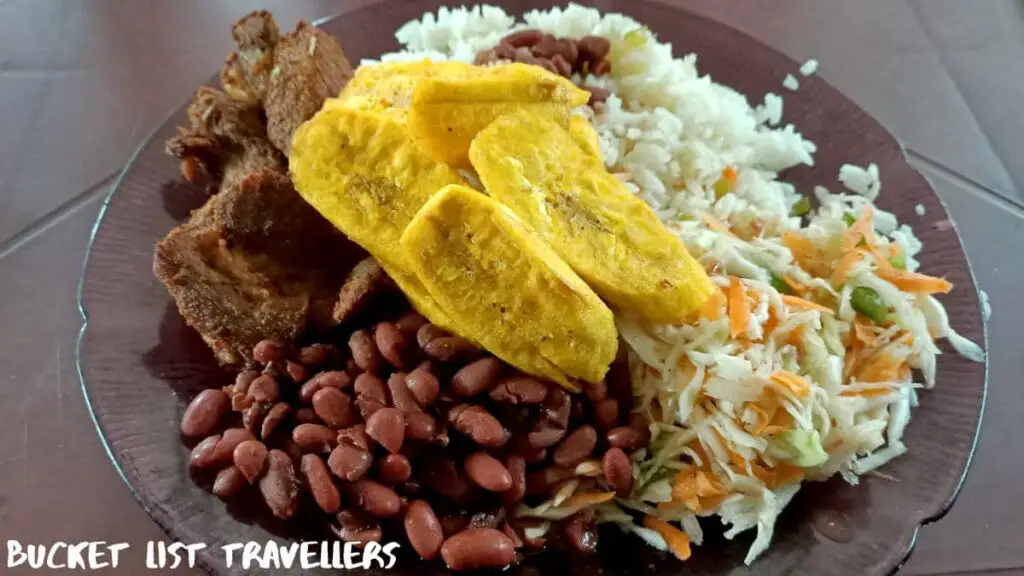
Our price guide for your food budget in Honduras is as follows:
- Restaurant meal – US$5-10 for a main dish (120-250 HNL)
- Local eatery – US$2.50-5 for a main dish (60-120 HNL)
- Street food – US$0.75-1.50 (20-40 HNL)
- Beer (try the local beer Salva Vida) – US$1.50-3 (35-70 HNL)
- Coffee – US$2 (50 HNL)
Keep in mind that prices are generally higher in Roatán compared to the rest of the country.
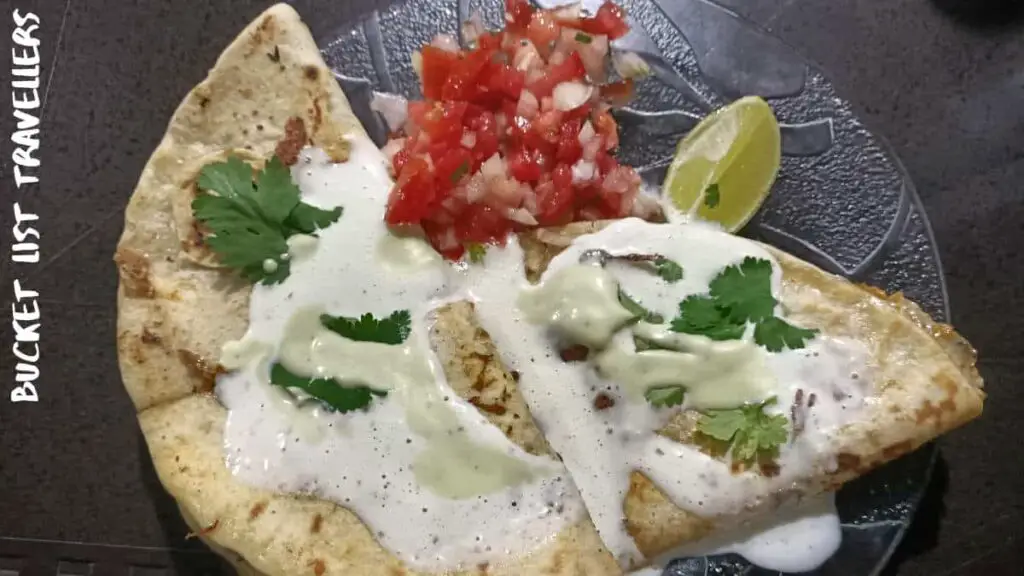
Must try dishes in Honduras include plato típico, baleadas, catrachas, sopa de caracol, tapado olanchano, bean soup, mondongo soup as well as nacatamales.
Honduras culture
Honduras national holidays
- New Year’s Day – 1 January
- Day of the Americas – 14 April
- Maundy Thursday – the Thursday before Easter Sunday, typically in March or April.
- Good Friday – the Friday before Easter Sunday, typically in March or April.
- Holy Saturday – the Saturday before Easter Sunday, typically in March or April.
- Easter day – typically in March or April
- Labor Day – 1 May (also known as International Workers’ Day)
- Independence Day – 15 September
- Columbus Day – 12 October
- Francisco Morazán’s Day – 3 October
- Armed Forces Day – 21 October
- Christmas Day (Navidad) – 25 December
National symbols of Honduras
- Honduras flag – three equal horizontal stripes of turquoise, white and turquoise, with five turquoise stars arranged in the shape of an H at the centre of the middle stripe. The two turquoise bands represent the Pacific Ocean and the Caribbean Sea. They also also represent the blue sky and brotherhood. The white band represents the land between the ocean and the sea, the peace and prosperity of its people, and purity of thoughts. The five stars represent the five nations of the former Federal Republic of Central America.
- Honduras coat of arms – this consists of an equilateral triangle, a volcano between two castles, a rainbow, a sun spreading light. The triangle on land surrounded by both seas. Around this image is an oval containing the words “REPÚBLICA DE HONDURAS LIBRE, SOBERANA, INDEPENDIENTE. – 15 DE SEPTIEMBRE DE 1821” written in gold. Above the oval there is a quiver filled with arrows as well as cornucopias joined with a tie. Below the oval are mountain ranges, three oak trees on the right and three pines on the left, as well as mines, a bar, a drill, a wedge, a sledgehammer and a hammer.
- National flower – Rhyncholaelia digbyana (a type of orchid)
- National bird – Scarlet Macaw
Honduras pastimes
- National dish – plato típico. This translates to “typical dish”. It consists of a number of items including carne asada (grilled meat), chorizo sausage, rice, refried beans, fried plantains, a salsa known as chismol, avocado, fried cheese, sour cream, white cheese, lime and tortillas. The exact components of the dish vary depending on where you get it.
- Popular drinks – pinol, horchata, chicha, batido, licuado, vino de coyol, gifiti, Salva Vida beer, Honduran coffee
- National sport – football (soccer)
- Religion – 46% Catholic, 41% Protestant (as at 2014)
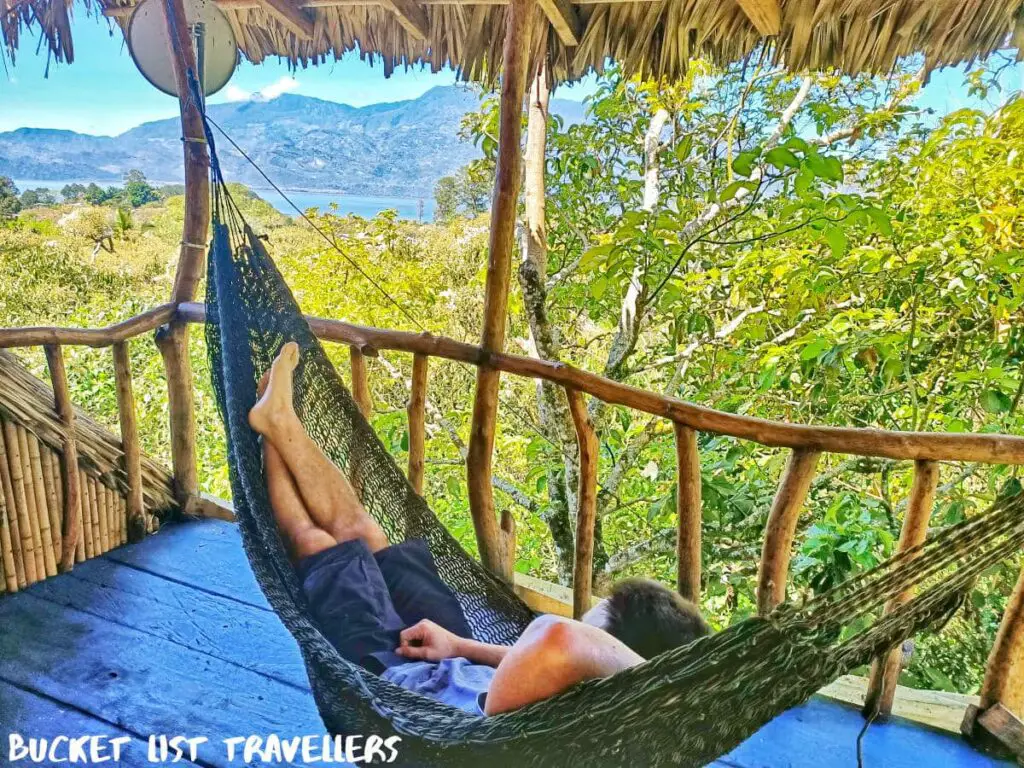
Famous Hondurans
- Famous people from Honduras – politician Francisco Morazán, politician Manuel Zelaya, writer Augusto Monterroso, comedian Carlos Mencia, religious leader Óscar Andrés Rodríguez Maradiaga, politician Tiburcio Carías Andino, activist Berta Cáceres, actor Daniel Moncada, journalist Satcha Pretto, scientist Salvador Moncada
- National sports stars – footballer David Suazo, footballer Emilio Izaguirre, footballer Wilson Palacios, footballer Steve Van Buren, Olympic boxer Teófimo López, Olympic sprinter Rolando Palacios
Is Honduras Safe?
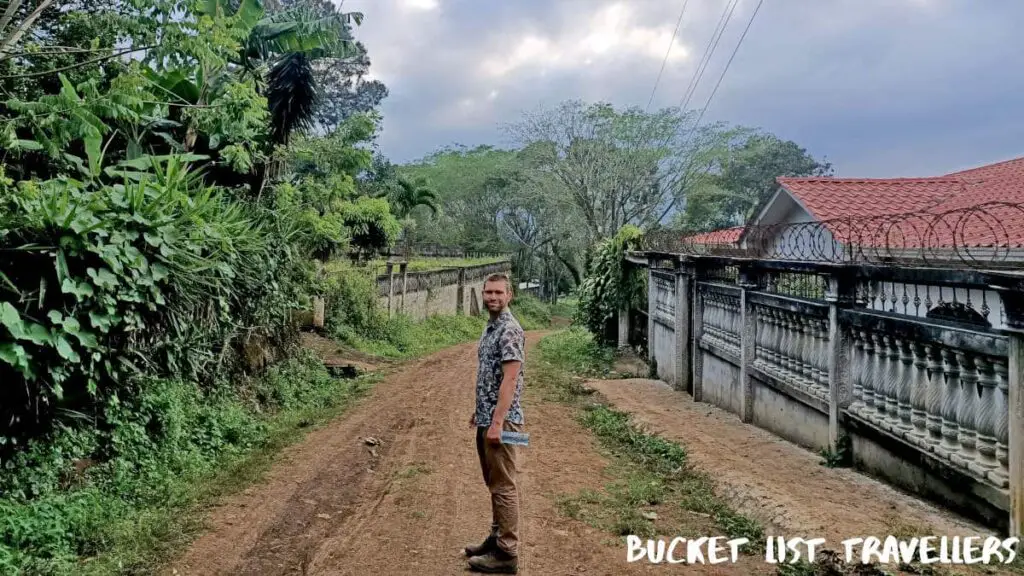
Honduras travel guide: Safety in Honduras
We recommend exercising caution when travelling in Honduras. San Pedro Sula in particular has a reputation for being unsafe to visit. Security screens are done at bus terminals in San Pedro Sula due to the history of violent armed robberies of buses in the area. Carjackings are also a risk. Many shops in major cities have armed guards out the front to deter robberies. Be alert to pickpockets and do not display valuables when out in public. A fellow guest was robbed outside our hostel in Tegulcigalpa. He had been making a phone call while waiting to get let into the building and his phone was stolen. Crimes of opportunity as well as violent crimes are a risk in Honduras. That being said, there are areas of the country that are very safe. For example, we did not have any safety concerns when on the island of Utila.
Honduras travel guide: General safety tips for Honduras
Other general safety considerations for travel in Honduras:
- Drinking water – The tap water in Honduras is not safe to drink. Most hotels will provide bottled water for guests to use
- Mosquitoes – There are mosquitoes in most areas of Honduras. In 2022, the main risks related to mosquito borne diseases were in the coastal areas, partiuclarly around Puerto Lempira on the Caribbean Coast.. For the most up to date information we recommend checking the CDC or NHS websites.
- Road safety – In Honduras we often travelled standing up in the back of vans or in vehicles without helmets or seat belts. Be aware that this does come with an element of risk
- Water safety – If you visit any of the coastal areas or lakes, take care when swimming as currents and waves may be stronger than you expect
- Sun safety – The UV Index is very high in Central America. Sun protection such as sunscreen, a hat and sunglasses is very important to ensure you don’t get burnt
- Dogs – In many countries in Central America, stray dogs are common. Additionally many people own dogs and their dogs may not always be friendly towards strangers. I was actually bitten by a dog at a hostel I was staying at near Lake Yojoa. A trip to the doctor and a few courses of antibiotics later I recovered, but I still have a scar on my leg. For more on dog safety while travelling, check out this video.
As with any destination, take all of your normal safety precautions.
Honduras Blogs
You can find our Honduras travel blogs below.
Affiliate Links
This website contains affiliate links. This means we may earn a commission on any purchases at no additional cost to you. Your support helps us continue our travels and make more travel blogs as well as travel videos, thank you!